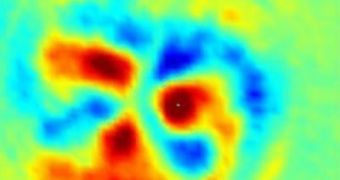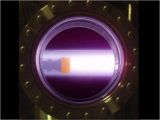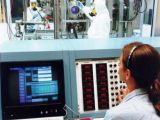The US Department of Energy (DOE) has recently awarded a $7-million research grant to a scientific group, made up of experts from the University of California in San Diego (UCSD), the Massachusetts Institute of Technology (MIT), and the University of California in Berkeley (UCB), for research related to advancing nuclear fusion technology. The group will focus its efforts mostly on plasma-surface interactions (PSI), which is a significant scientific challenge in magnetic confinement fusion. The researchers will spend the next five years trying to create an innovative approach to PSI sciences.
“Right now we're not really making sufficient scientific progress in this field. There's no deep understanding of this interaction between the plasma and its 'wall' and the other materials in a confined environment. If you can build these 'walls,' or layers, to be more effective it will save time, money and energy in the long run,” UCSD Jacobs School of Engineering Center for Energy Research scientist Russ Doerner, who is also the co-principal investigator of the contract, says.
The UCSD will also host and lead a new Center for Momentum Transport and Flow Organization in Plasmas and Magnetofluids, under a five-year, $5.8-million grant from the DOE. The main goal of the new institution will be to analyze the turbulent transport and organization in fusion and astrophysical plasmas, as well as to examine the link between turbulent momentum transport and large scale flow self-organization. It will do so by employing a number of innovative approaches to critically test emerging theoretical and computational models.
“Our aim is to provide power from fusion in a controlled environment. From a DOE and energy perspective, fusion energy is important for the future because most[ly] everything we're using these days is eventually going to be exhausted. Renewable energies like wind and solar are good, but they don't provide the necessary power concentration you need for something like large industrial or population centers,” Doerner adds.
“With magnetic fusion you are basically trying to build a sun on earth. But you have to put the sun inside of something. The sun tries to melt the walls. We try to study how the walls behave in that environment. We are trying to understand the plasma interaction with the surfaces around it so we can keep the plasma pure and the walls intact. [...] How the plasma interacts with the walls is one of the issues that determines how well these fusion reactors will generate energy and how cost effective they will be,” the expert explains.
Projects such as ITER (originally, the International Thermonuclear Experimental Reactor) are most likely to be the main beneficiaries of the new technologies and technological approaches. Scheduled for completion in 2018, it will have to contain a tokomak, a magnetic confinement device that produces a toroidal magnetic field for confining a plasma. In a sense, this device is the leading candidate for producing controlled nuclear fusion.
“Fusion should be looked upon on as an attractive nuclear energy source. In the end you need baseline electrical power to run an industrial society, and fusion could provide that. But when you engineer these materials and environments you have to know how they all will work together and interact. Our vision is to make this (fusion energy source) carbon free and very safe,” MIT Associate Professor of Nuclear Science Dennis Whyte says.

 14 DAY TRIAL //
14 DAY TRIAL // 

